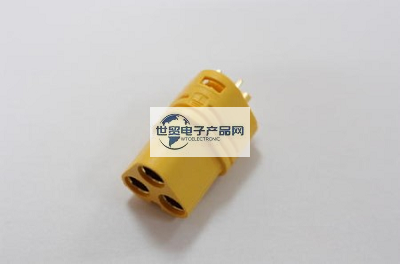Categorization:Product Information
Mechanical properties The insertion and extraction force is an important mechanical property in terms of the connection function. Insertion force is divided into insertion force and extraction force (extraction force is also called separation force), and the requirements of the two are different. The maximum insertion force and the minimum separation force are specified in the relevant standards, which indicates that, from the point of view of use, the insertion force should be small (thus there are structures with low insertion force LIF and no insertion force ZIF), and if the separation force is too small, it will affect the reliability of contact. Xiaobian takes you to understand the performance of power battery connector contacts! The mechanical properties of power battery connectors mainly include the following five points: 1. Yield strength, also known as yield strength, is the critical stress value of material yield. The so-called yield means that after reaching a certain deformation stress, the metal begins to transition from the elastic state to the elastic-plastic state inhomogeneously, which marks the beginning of macroscopic plastic deformation. Impact of yield strength on the connector: the higher the yield strength of the metal material, the greater the positive force of the terminal; 2. Tensile strength. When the material yields to a certain extent, its ability to resist deformation increases again due to the rearrangement of internal grains. At this time, although the deformation develops rapidly, it can only increase with the increase of stress until the stress reaches the maximum. After that, the ability of the material to resist deformation is significantly reduced, and large plastic deformation occurs at the weakest point, where the section of the specimen shrinks rapidly and necking occurs until fracture failure. The maximum stress value (the value corresponding to point B) of the material before tensile fracture is called the strength limit or tensile strength; 3. Elongation refers to the percentage of the elongation length to the original length when the metal material is fractured by external force (tension); 4. Hardness. The ability of a material to resist locally hard objects being pressed into its surface is called hardness. The local resistance of solid to the invasion of external objects is an index to compare the softness and hardness of various materials. As all metal materials of the connector are extremely thin, it is measured by Vickers hardness (HV). Vickers hardness (HV): Press the diamond square cone indenter with a load of less than 120kg and an apex angle of 136 ° into the surface of the material, and divide the surface area of the indentation pit of the material by the load value, which is the Vickers hardness value (HV). Hardness is an important parameter for connector material selection; 5. R/T ratio. R (radius) refers to the inner radius of the bend, and T (thickness) refers to the thickness of the material. If the inner diameter of the product to be molded is smaller, the material with smaller R/T ratio must be selected.

---------------------------------------------------------------------------------------------------
2、 on the World Trade Electronic Products Network Platform and Sales Product Profile: World Trade Electronic Products Network-professional agent/production/sales of various { connector | harness | cable products }; If you have relevant [connector | harness | cable products] procurement/purchase needs or want to buy/know what connector | harness | cable products solutions we can provide, please contact our business personnel below; if you have relevant [connector | harness | cable products] sales/resources and promotion needs, please click "Business Cooperation ←" to negotiate with the specialist!